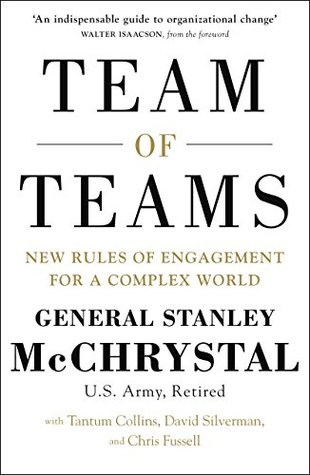More on this book
Community
Kindle Notes & Highlights
Read between
July 12 - July 18, 2018
I once asked Steve Jobs, often mistakenly considered a lone visionary and authoritarian leader, which of his creations made him most proud. I thought he might say the original Macintosh, or the iPhone. Instead he pointed out that these were all collaborative efforts. The creations he was most proud of, he said, were the teams he had produced,
We had to tear down familiar organizational structures and rebuild them along completely different lines,
we restructured our force from the ground up on principles of extremely transparent information sharing
The models of organizational success that dominated the twentieth century have their roots in the industrial revolution and, simply put, the world has changed.
The data vindicated Taylor’s belief in the mismatch between the capabilities of technology and the way organizations were run,
The two Tareks illustrate the contradiction between the tremendous technological progress witnessed during the past century, and our seemingly diminished ability to know what will happen next. Though we know far more about everything in it, the world has in many respects become less predictable.
When, several years later, Lorenz presented a paper about his findings, he titled it “Does the Flap of a Butterfly’s Wings in Brazil Set Off a Tornado in Texas?” The phrase “the butterfly effect” entered the world.
Big Data will not save us because the same technological advances that brought us these mountains of information and the digital resources for analyzing them have at the same time created volatile communication webs and media platforms, taking aspects of society that once resembled comets and turning them into cold fronts. We have moved from data-poor but fairly predictable settings to data-rich, uncertain ones.
Speed and interdependence had rendered our environment in Iraq incompatible with the vertical and horizontal stratification that had maintained military order for centuries.
Had each of our teams been an individual at BUD/S, he would have gotten booted in week one.
Our entire force needed to share a fundamental, holistic understanding of the operating environment and of our own organization, and we also needed to preserve each team’s distinct skill
To become effective against AQI, we would have to dismantle our deeply rooted system of secrecy, clearances, and interforce rivalries, and in its place establish an environment of such transparency that every man and woman in our command understood his or her role within the complex system that represented all of our undertakings.
Alfred Chandler observed that the role of the merchant, which once embraced “exporter, wholesaler, importer, retailer, shipowner, banker and insurer,” split—like Adam Smith’s pin production—into multiple specialized businesses in the late 1800s.
The silos and competitiveness that once made GM the world’s most successful company now resulted in spectacular failure.
top-down coordination of siloed efforts works only if those on top actually understand how everything will interact.
Paradoxically, the seemingly instantaneous communications available up and down the hierarchy had slowed rather than accelerated decision making.
In short, when they can see what’s going on, leaders understandably want to control what’s going on.
We had access to more real-time information than any force in the history of warfare, but to what end?
I began to reconsider the nature of my role as a leader. The wait for my approval was not resulting in any better decisions,
Within our Task Force, as in a garden, the outcome was less dependent on the initial planting than on consistent maintenance.
wither. I found that only the senior leader could drive the operating rhythm, transparency, and cross-functional cooperation we needed.
trips, like almost everything, benefited from careful planning and focused execution. Most of these visits had multiple objectives: to increase the leader’s understanding of the situation, to communicate guidance to the force, and to lead and inspire. A good visit can accomplish all three, but a bad visit can leave subordinates confused and demoralized.
The heroic “hands-on” leader whose personal competence and force of will dominated battlefields and boardrooms for generations has been overwhelmed by accelerating speed, swelling complexity, and interdependence.
More than directing, leaders must exhibit personal transparency. This is the new ideal.
when we visualized our own force on the whiteboards, it now took the form of webs and nodes, not tiers and silos.


